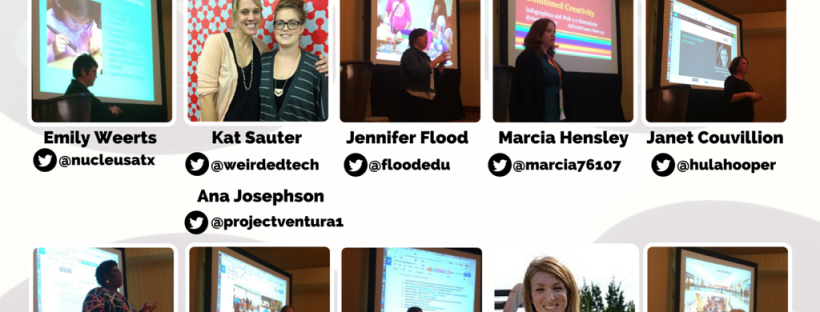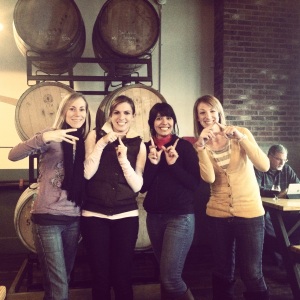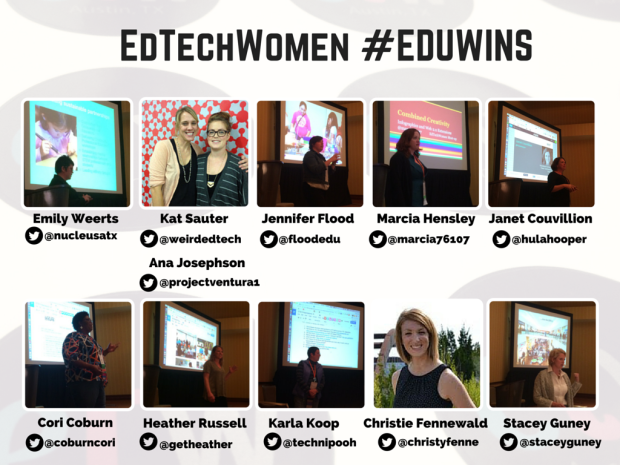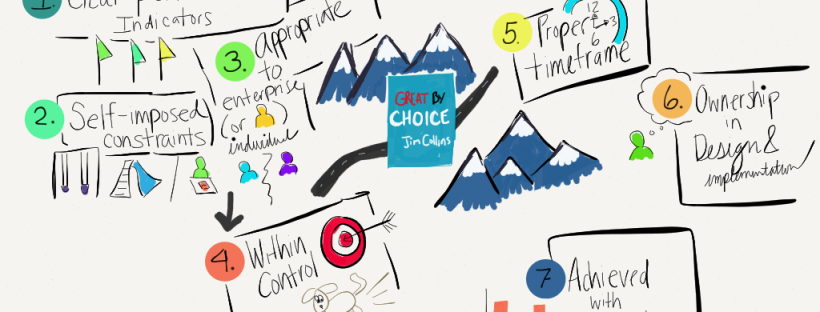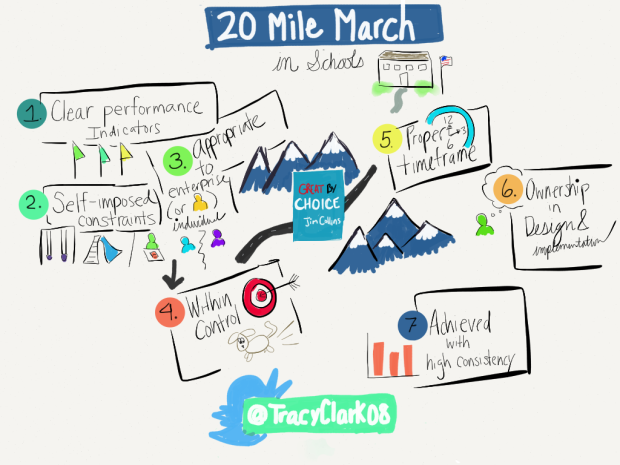When our EdTechWomen Austin chapter organizers sat down (and by sat down I mean opened our Google Hangout Chat window) to discuss plans for an event at TCEA we all aligned on one point. We wanted to provide opportunities to raise up authentic voices of females and their supporters. We hoped to provide a safe, laid-back environment for women to come together and share the ways they were trying to innovate, ideas they had, their EduWins, and the lessons they were learning along the way.
Part by design and part by necessity we kept it really simple and each speaker shared a little glimpse into what was going on in their world:
- Emily Weerts used the time to practice her pitch deck for Nucleus Learning Network, an organization she co-founded which is focused on connecting, educators, learners and mentors by facilitating sustainable partnerships that will result in high-quality educational experiences. She shared about the ways in which the Nucleus Network is coordinating Affinity Groups where people working on similar issues can connect to enhance cooperation in order to develop and achieve shared goals. The Nucleus Network is also coordinating the Maker Education Village this year at the Austin Mini Maker Faire.
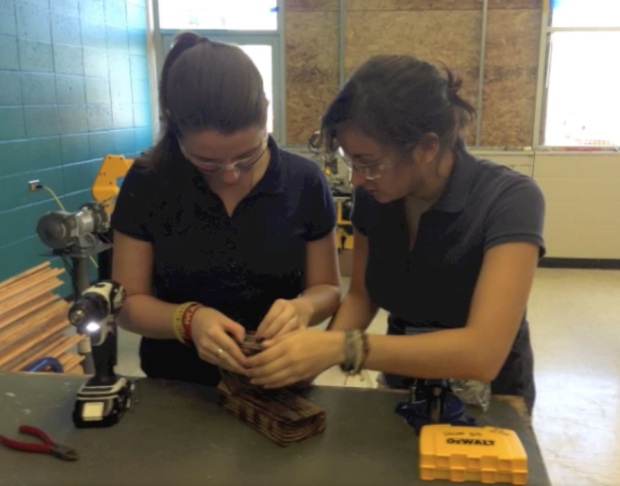
- Kat Sauter & Ana Jo shared about their journey to develop a MakerSpace at the Ann Richards School and the lessons they learned along the way. They shared how the space is already impacting student learning and providing opportunities for innovative experiences. We especially loved this picture of girls working with power tools to create. For others interested in creating a MakerSpace, their advice was to start by identifying the current resources such as: space, funding, and experts. You can learn more about their innovative space and projects on these two sites: www.arsdesignlab.com & www.projectventura.wordpress.com
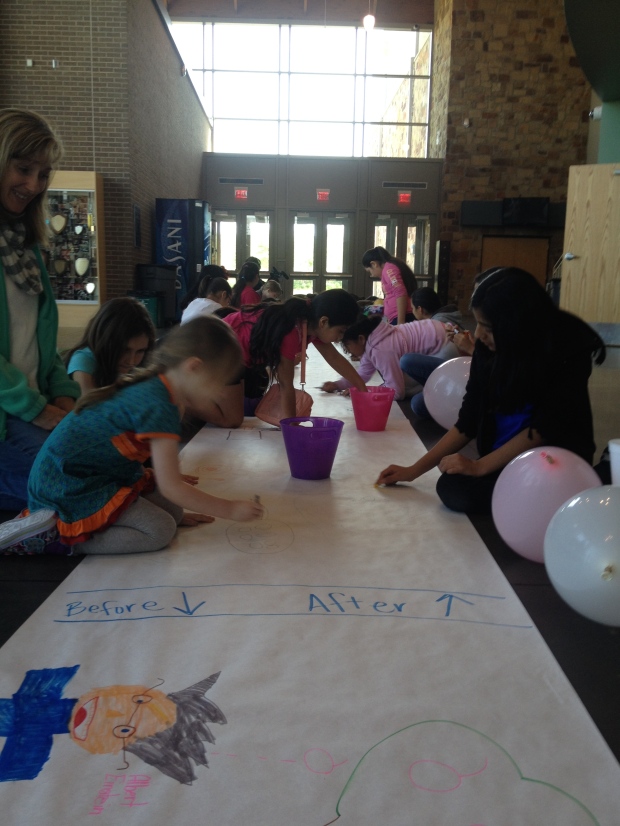
- Jennifer Flood shared about her brainchild event Challenging Perceptions which was initiated last spring to do just that, challenge the perceptions young girls had about the STEAM fields and opportunities through hands on activities, conversations with mentors, and facilitated reflection. The event took place in Bastrop in hopes of providing opportunities for girls on the East Side of Austin to participate, an area Flood feels is often underserved. EdTechWomen Austin plans to support the event again this year and is looking for volunteers and mentors to help make the day a success. Sign up to help here! SXSWEdu even did a piece about last year’s event.
- Marcia Hensley: discussed some of the creative possibilities when webtools and extensions are combined in the classroom in her presentation Combined Creativity. Marcia asked the group to talk about how their students create unique learning artifacts with various tools and shared about the power of infographics to encourage student thinking and demonstrate information in a new way.
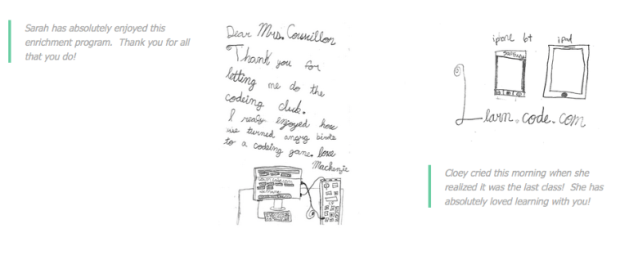
- Janet Couvillion: Janet’s energy and passion for her new organization Young Women Who Code was contagious. The organization is committed to providing opportunities for young women, aged 5-12, to learn the fundamentals of computer science. Young Women will experience various plugged and unplugged coding exercises, in addition to having access to a mobile maker space. Janet shared about her journey into the world of technology and her heart for encouraging young women to explore the possibilities of creation with code.
- Cori Coburn: I am pretty sure Cori inspired everyone with her talk “On the Move”. She shared about her reignited passion to learn and grow and how this mindset has transformed her life and career. She even received her most recent job opportunity via Twitter! Her advice to the rest of us? Remember your roots and why you do what you do. Establish relationships. Be connected. Jump at opportunities to improve yourself. She is a true embodiment of someone who takes her own advice and I could listen to her stories all day.
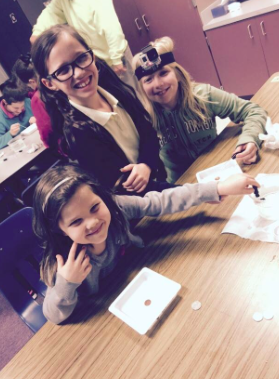
- Heather Russell: motivated others to take the plunge and host a STEAM Night. Heather gave us some ideas and tips from her experience of planning and hosting a STEAM night in her district. She shared stories of parents and students playing and learning together as they explored different materials, activities, and concepts. Her stories and advice definitely had brains marinating on the possibilities back in our own districts and communities.
- Karla Koop: shared how she is retiring from her many years in public education in order to pursue her vision to take Maker Spaces to the masses. Her new company, MaKr U will provide MakerCamp opportunities for all ages including DIY spaces where people can gather to create, invent, and learn. They will provide equipment such as 3D printers, software, electronics, craft and hardware supplies in the experience.
- Christy Fennewald: shared about the incredible group of students she works with in her Girls Who Code club. These girls constantly blow Christy’s mind with their desire to innovate, create, organize themselves, and make a difference. You can see more at the Westwood Girls Who Code club site. The girls are currently seeking more female instructors and speakers in the industry. Contact Christy if you’re interested.

- Stacey Guney: shared how the Austin Community College gave new life to the Highland Mall with the largest installation of edtech in the country. She gave us a behind the scenes glimpse of the project and transformation. One new program made possible by the space is called the ACCelerator, which is already having a positive impact providing flexibility and differentiated opportunities for students working to further their education amidst the demands of work and family.
Thank you to all these incredible women and everyone who took part in the event. We look forward to future opportunities to nurture authentic voices, come together, and push one another towards greater innovations and impact.
